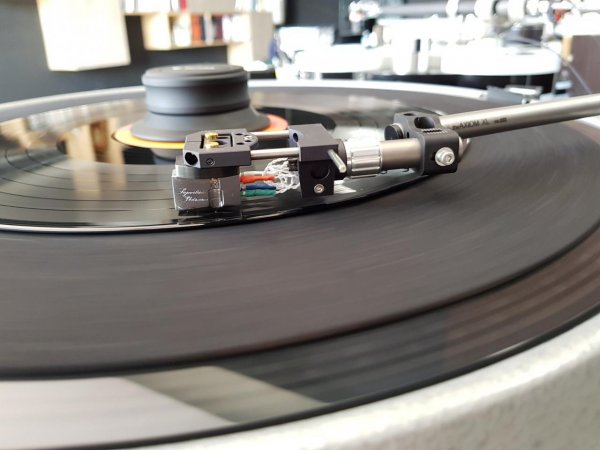I now have about twenty hours on the Red Sparrow. Well I cheated a little... had my secretary played it when I was in the meetings and during weekend

. Yesterday I listened about four hours. Right now I am playing it too.
Peter asked me to compare to the Opus1 and the Atlas SL. I will do just that. May be after 100 hrs what I write today will be different. But for now...
The Red Sparrow is super in detail rethrieval and resolution. If you are not accustomed to hearing exceptional transparent tiny details from vinyls you will be amazed by this cart. The resolution of RS is about as high as the Opus and I haven’t heard anything more resolve than the Opus. In piano, you can clearly hear how hammer strike the string. And in Cello, you practically hear into the texture of strings. The AtlasSL is less resolve than these two on my current set up. But just for a note, My AtlasSL is on the Axiom arm, EMT 927 using EMT JPA66 phono. The RS is on SAT/AF1P while Opus1 is on SAT/Kronos using the same Ayon wonderful phono that no one but me use in this forum. Definitely not apple to apple.
RS has a tone that is as vivid as Opus1 making the AtlasSL a shade greyish in comparison. The body of RS is smaller with less meat on the bone than both Opus and SL. Image size is Asian size with a stage set further back. Midbass is less than both Opus and SL. Bass region doesn’t seem to be the high light of this cart. Extension on highs is as good as the other two. The cart seems to be linear from bottom to top but the bottom is not so heavy. RS is not warm and not cold. Very detail but not analytical.
Dimensionality. Both Opus and SL are more dimensional, dense...more object-like sound. The RS is flat in comparison. It has depth, it has layer, but it is flat. The Opus is most holographic, follow by SL. The RS is not holographic. I mentioned of piano and cello to describe the resolution. However, On these same instruments, the Opus clearly outshines the RS in term of giving you an excellent sense of the whole body or house of cello and piano. You hear “ the whole” piano and cello with Opus and SL, not just vibration and sound from strings. Dimensionality gives you this sense of whole instrument.
Musical involvement. I built my system to get connection to the music I play. I don’t even have to play loud for both of my set ups of SL and Opus1 to draw my attention and musical involvement. The RS is less so. I get more musical “pop” and “illumination” (borrow this word from micro

) from the Opus and SL setup. With these two carts, when different instruments play at the same time, each has a lot of its own illumination, not boringly “within the crowd.” Also, When cellolist or bassist goes at it, the vibration and plug just hit my chest more with SL and Opus. With RS I have to crank the volume up more to get attack, sharp dynamic swing, the hit. I listened mostly jazz. I haven’t played RS on classical so it could be better than the Opus and SL in that type of music. Your phono need to have a very high gain to play RS dymamically. It is rated 0.2 mV. Only 0.03 mV lower than SL, but SL plays quite louder given the same volume.
The bottom line is this cart is A+ in detail rethrieval without being clinical. Transparency and resolution is sky high. The rest you just have to listen by yourself. Carts are up to ones preference. My SL took a while to grow meat and become balance. I have to play around more with RS. Switch arm to heavy mass Axiom. Switch tt. My life playing with vinyl front is a lot easier and less back ache than uncle MikeL

.
Kind regards,
Tang
Added: The sense of ambient is big delta more with Opus, smaller delta more with SL. I don’t know why the RS on one hand is so very resolving while on the other gives less ambient spatial cues than the other two.







